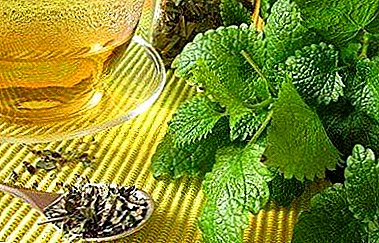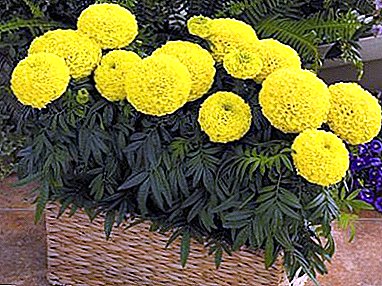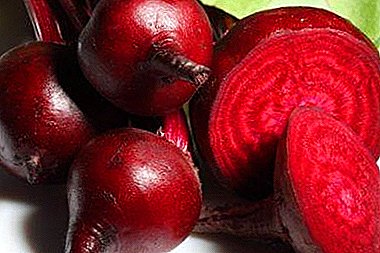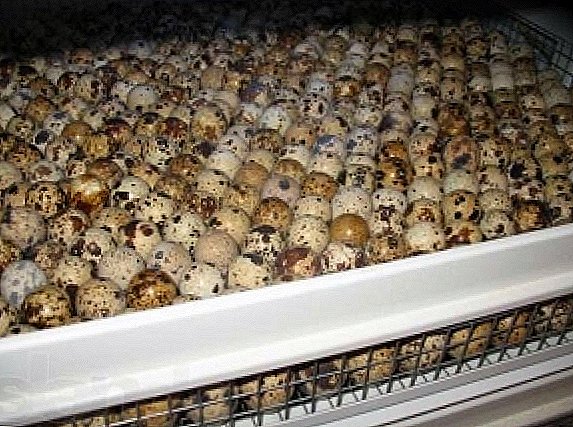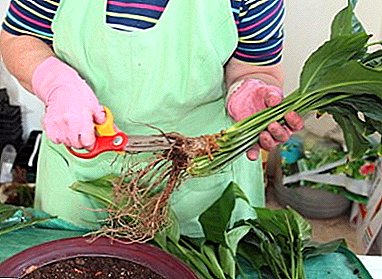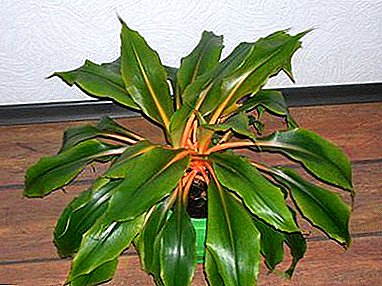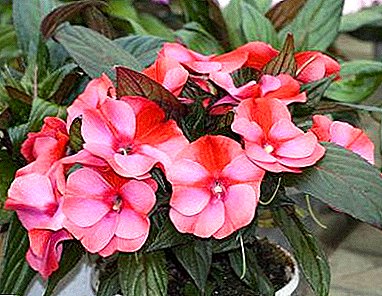
Balsam - a very popular plant among gardeners. It is loved not only for its attractive appearance, long flowering period, but also for its unpretentiousness, as well as for the species diversity of the flower.
Balsam is perfect for growing in the apartment and in the open field. But when caring for him, questions arise, especially for beginner gardeners: when a flower transplant is needed; how to do it right without harming the plant; what should be the composition of the soil and the size of the pot.
A few simple tips will help you avoid mistakes when planting this plant. And also learn how to propagate this flower.
When do I need a transplant?
- Transplantation is desirable to do if you bought balsam in the store and do not know in what soil and how long the plant grows. But first let the flower get used to the new conditions of its habitat. It is better to transplant it 10 days after purchase.
- Planned transplantation in the spring to update the soil.
- Transplantation can be used to save the plant when roots rot (you can find out about the balsam diseases and their treatment and prophylaxis here). Balsam badly reacts to stay in a cold room. If at the same time water it with water from the tap, the root system begins to die off.
How to transplant a plant at home to help him:
- remove balsam;
- inspect the roots, remove the affected rot;
- process cuts with crushed activated charcoal or charcoal;
- plant balsam in new soil;
- move to a warmer room, take water at room temperature for irrigation.
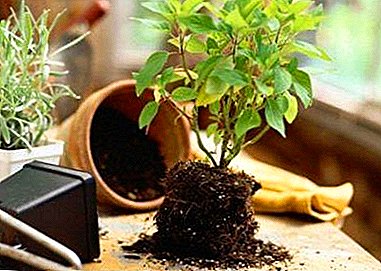 A transplant is also needed if your balsam has significantly outgrown the pot. This is usually noticeable by the deterioration of its appearance and the roots sticking to the surface or protruding from the hole at the bottom. New pots choose more than 1-2 cm in diameter.
A transplant is also needed if your balsam has significantly outgrown the pot. This is usually noticeable by the deterioration of its appearance and the roots sticking to the surface or protruding from the hole at the bottom. New pots choose more than 1-2 cm in diameter.- If white plaque forms on the soil surface, transplanting is not necessary. It is enough to remove a thin top layer, pour fresh soil into the pot. After that, water only in the pot tray to avoid further alkalization of the soil.
- After 2-3 years, it is better to renew the balsam completely, otherwise it will cease to bloom and eventually will lose its attractive appearance. Take the stalk from the bush and root it, and discard the old plant.
The best time for the procedure
Once a year, prophylactic transplantation is required., because a balsam very quickly pulls all nutrients out of the soil. It is better to do it in early spring, before flowering. Do not neglect the mandatory spring transplant!
Pot selection and land preparation
- Which pot is better to plant a flower? Correct to choose a small size. In a spacious pot, your ward will begin to build up green mass and root system, but will not be happy with flowering. When transplanting an adult plant, take a pot half the crown of your balsam. Claydite is laid on the bottom, a layer of 2-3 cm. It is not important to buy a ceramic or plastic pot. Balsam feels good in the "house" of any material.
- Soil choose fertile, but easy - it is desirable to take a mixture of leaf earth, peat, humus, turf land, sand. Proportions 1/1/1/1/1. You can buy ready-made soil for flowering houseplants, which contains all these components. The soil for balsam should be with weak acidity. Avoid nitrogen rich soil.
Carrying out the procedure: step by step instructions
- In order not to damage the plant’s rather fragile shoots, before the transplanting start, carefully pour the soil in the pot so that the ground can be easily separated from the walls.
- Holding the balsam at the basal base, turn the pot upside down and remove the earthen room.
- If there are old dry or injured roots, remove them.
- Dip the balsam into the cooked new pot with drainage at the bottom, keeping it centered.
- Powder, compact.
- Liberally pour again.
- A few days after transplanting protect balsam from the bright sun.
Planting indoor plants
How to put indoor balsam? Planting is better to start in early spring, but if necessary, you can do it throughout the year. Future seedlings root in advance. In the planting itself, no special tricks are required - it is important to choose a suitable pot and soil, and water the plant abundantly after planting. You can plant in one pot several cuttings with flowers of different colors - when the time of flowering comes, such a composition will look very impressive!
How to root?
Cut off the tops of the shoots (8-10 cm) and put in the water or wet sand. To speed up the process, you can add the drug "Kornevin" in water. After the appearance of the roots, the cuttings are transplanted into the soil. Young balsam blooms in 1.5-2 months after rooting.
From the video you will learn about how you can root balsam cuttings:
A photo
Check out the photos of the balsam decorating the apartment with its bloom:




Propagation by seeds and cuttings for open ground
The balsam will serve as a wonderful decoration of any flower bed. It blooms from late June until frost. In the fresh air balsam feels great. The plant is an annual, seedlings are planted every new spring.
You can get seedlings in two ways:
- When using balsam seeds - sowing is carried out in March or April. Disembarking on a permanent seedling site can be carried out after the threat of frost has passed. The ideal temperature is above +15 +17 degrees.
- The second option is to grow seedlings from balsam cuttings. Young shoots root also in April, and in the beginning of summer make out on a bed.
When choosing a place for planting, keep in mind that balsam is a rather tender plant, it is better to protect it from the scorching sun. But in the shade of balsam is better not to plant. The flower needs the morning sun, and in the hot afternoon it is better to pritenyat it.
When and how to get seedlings and what problems may arise during the breeding of balsam, you can find out in our material.
Further care
- After transplanting requires abundant watering.
- It is desirable to keep a houseplant in a bright room with a temperature not lower than +20 degrees. Street balsams should be sheltered from the cold if frost is predicted to occur.
- During the flowering period, balsamine requires fertilizing with nutrient fertilizers. Phosphorus and potassium must be present in them, but nitrogen should be avoided. Nitrogen fertilizers will cause active growth of roots and greenery, but at the same time balsam refuses to bloom.
It is impossible to conduct dressing immediately after balsam transplantation! The first fertilization can be carried out only three weeks after the landing, when the balsam is adapted.
As you can see, even a beginner gardener can handle the care of balsam. Do not forget to use our recommendations when planting and transplanting, and you will always have a wonderful blooming balsam on the windowsill or in the garden!


 A transplant is also needed if your balsam has significantly outgrown the pot. This is usually noticeable by the deterioration of its appearance and the roots sticking to the surface or protruding from the hole at the bottom. New pots choose more than 1-2 cm in diameter.
A transplant is also needed if your balsam has significantly outgrown the pot. This is usually noticeable by the deterioration of its appearance and the roots sticking to the surface or protruding from the hole at the bottom. New pots choose more than 1-2 cm in diameter.